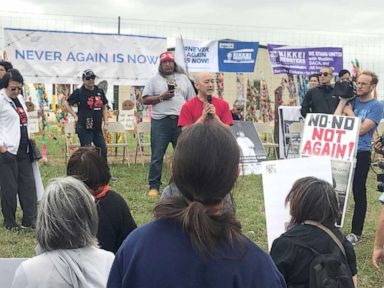
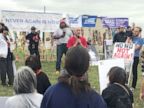

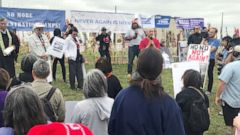
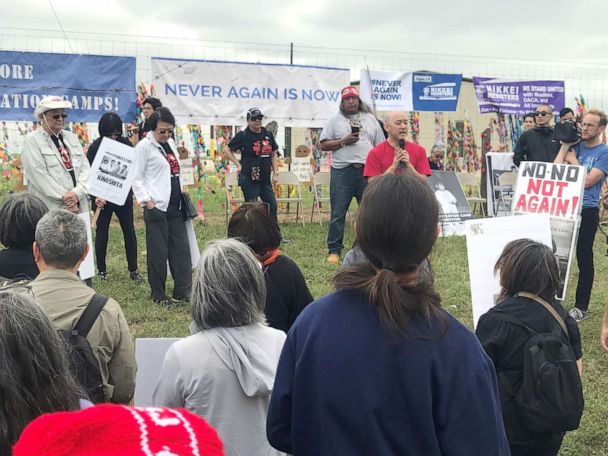
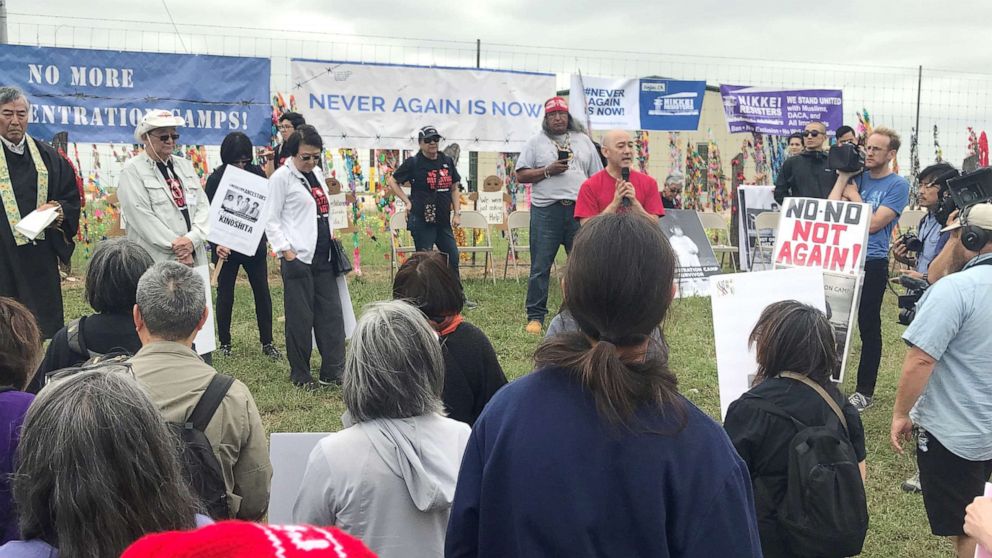
About 45 miles from Crystal City, Texas, where Hiroshi Shimizu was held as a child in a Japanese internment camp during World War II, there is the South Texas Residential Family Center in Dilley — a euphemism, some would say, for a family detention center.
As the country’s largest detention center, with capacity up to 2,400, it’s been a focus of the ongoing immigration debate across the nation.
Now 76 years old, Shimizu is returning to Crystal City on Saturday afternoon along with a group of Japanese American individuals and organizations to stage a peaceful protest at the border against family separations under the Trump administration’s “Zero Tolerance” policy.
More than 60 people of Japanese ancestry, many of whom are either former detainees or descendants of those who were incarcerated during World War II, first made a pilgrimage to the site of the former Japanese detention center in Crystal City, where a memorial service took place in honor of their families and those who lost their lives.
We’re not just saying we feel your pain, we’re going further than that — it has to stop.
A statement from Satsuki Ina, one of the organizers, said that these former World War II detainees, now in their 70s, 80s and 90s, along with their friends, families and descendants, would travel east from Crystal City to Dilley, where they will join the rest of the protesters calling attention “to all immigrants being subjected to mass incarceration today.”
As a psychotherapist, Ina, 75, not only studied community trauma but knows firsthand how damaging traumatic events can be as she and her family were held at Tule Lake Segregation Center in California — one of 10 Japanese internment camps ran by the U.S. government during World War II — after the Pearl Harbor attack.
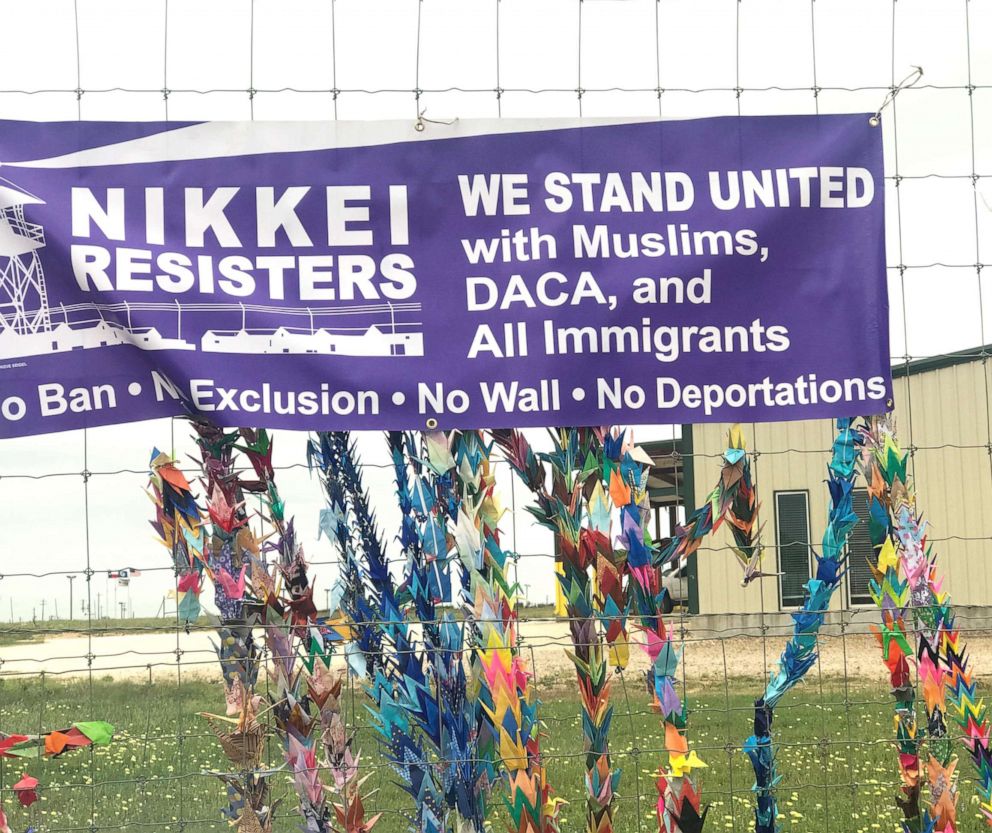 ( John Ota) Protest at South Texas Residential Family Center in Dilley, Texas, 3/302019
( John Ota) Protest at South Texas Residential Family Center in Dilley, Texas, 3/302019It’s a pain that really resonates with families like Shimizu’s, especially within the Japanese American community.
Shimizu was born behind barbed wire at the Topaz War Relocation Center in Utah in 1943, and in the same year, his family was transferred to the Tule Lake center.
Even after Shimizu’s parents renounced their United States citizenships in 1945, they were denied release. When the government’s efforts to deport them failed, they were incarcerated again at the internment camp in Crystal City six months after the war was over.
Shimizu’s family did not get released until almost two years after the war.
Although it’s not “exactly the same thing,” Shimizu said that at it’s core, the events occurring at the border were still a “human rights issue.”
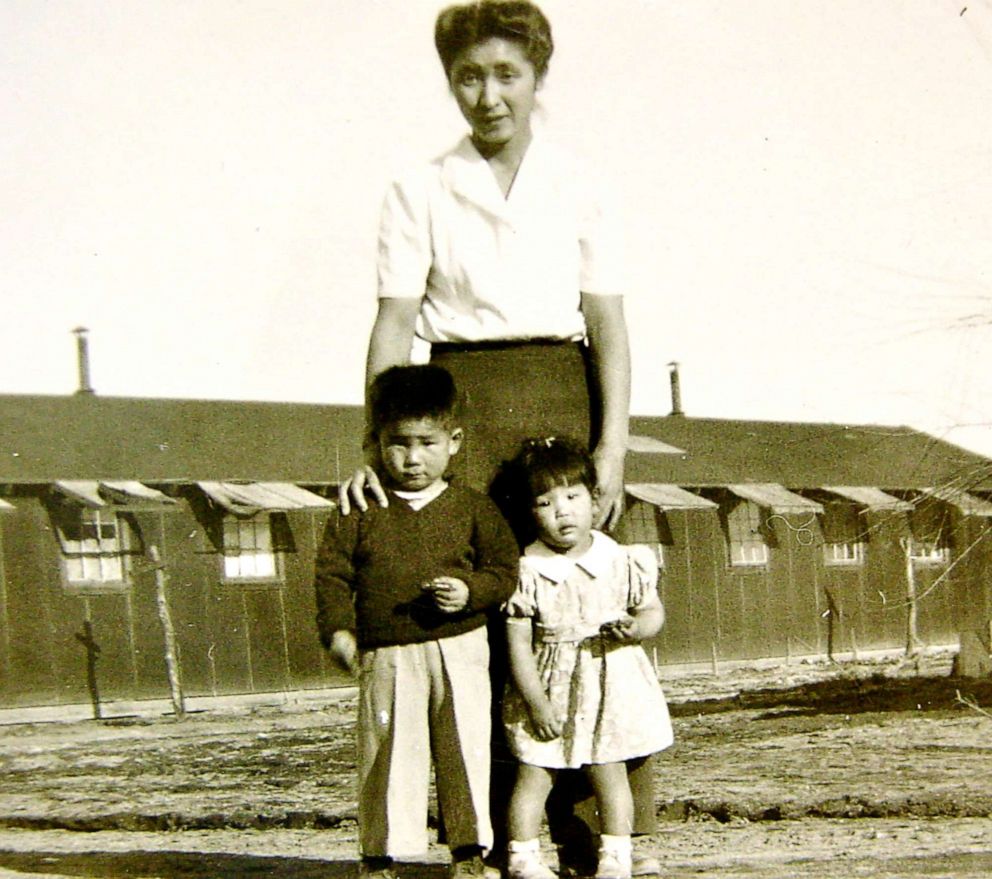 (Obatined by ABC News) Shizuko Ina, Kiyoshi Ina and Satsuki Ina in Tule Lake after their father was taken and incarcerated in North Dakota. Photo taken at Tule Lake Segregation Center, Ca., 1945.
(Obatined by ABC News) Shizuko Ina, Kiyoshi Ina and Satsuki Ina in Tule Lake after their father was taken and incarcerated in North Dakota. Photo taken at Tule Lake Segregation Center, Ca., 1945.Ina believes it’s the familiarity of what’s happening at the border that helped the protest garner support across the country.
Those who couldn’t make it to the protest contributed by making paper cranes, known as “ori- tsuru,” to hang along the fence of the facility.
“We were hoping for 10,000,” Ina told ABC News. Instead, they received more than double that from supporters in a diversity of communities.
Those colorful origami cranes, a symbol of peace and hope, were part of a rallying cry across the country to protest against what people like Ina fear is a “repetition of their own historical mass incarceration,” with innocent families unjustly detained and separated again.
In a recent report by the U.S. Department of Health and Human Services, the Office of Inspector General revealed that although HHS has identified 2,737 children separated from their parents as of now, the total number is unknown, as “thousands of children may have been separated during an influx that began in 2017, before the accounting required by the Court, and HHS has faced challenges in identifying separated children.”
When Grace Shimizu, 65, first heard about the consequences of the “‘Zero Tolerance” policy, she was horrified, but she quickly realized this wasn’t new.
Throughout American history there have been forced family separations, she said. “Just look at the way indigenous people, African Americans and Japanese Americans were treated.”
Grace Shimizu is the daughter of a former Japanese immigrant from Peru; her father was forcibly brought to the United States during World War II under President Franklin D. Roosevelt’s secret prisoner exchange program.
The little-known program aimed to deport those of Japanese ancestry in Latin America and use them as hostages in exchange for Americans held by Japan.
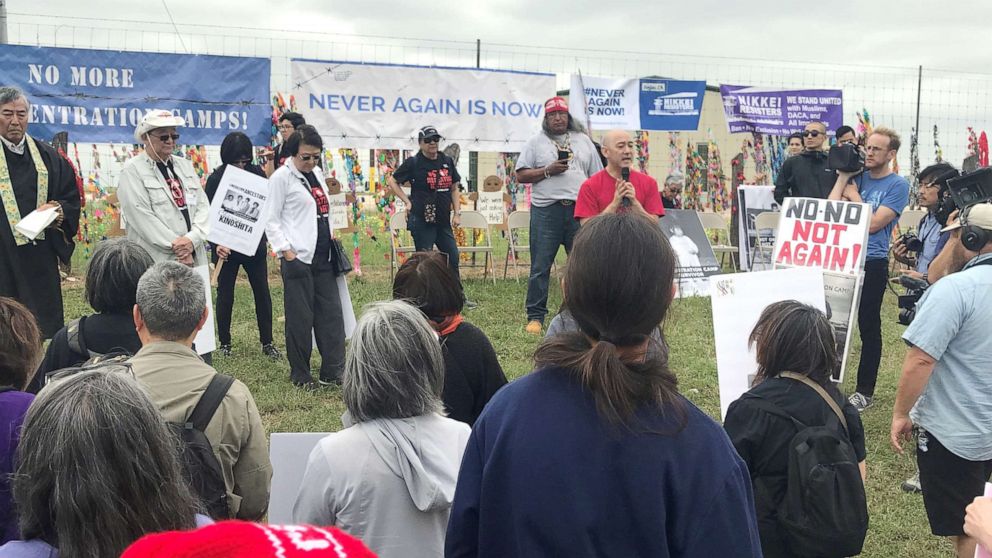 (John Ota) Protest at South Texas Residential Family Center in Dilley, Texas, March, 30, 2019.
(John Ota) Protest at South Texas Residential Family Center in Dilley, Texas, March, 30, 2019.A few months later, Grace Shimizu’s father was transported to the detention center in Crystal City, where thousands of other Germans, Italians, Japanese Americans and Japanese Peruvians, including some of his family, were held on unsubstantiated charges.
“Just like in the U.S., people started disappearing after Pearl Harbor, our family was targeted among other leaders in the community,” Grace Shimizu told ABC News.
After the war, her father wasn’t allowed to return to Peru so he stayed in the U.S. and eventually started a new family with her mother, she said.
Decades after her father’s release, she and six other families launched the Japanese Peruvian Oral History Project to preserve their family’s history and help those who seek redress.
Beyond expressing their empathy, Grace Shimizu said they wanted to be here today to bare witness and expose more of what’s going on in order to hold the government accountable.
“We’re not just saying we feel your pain, we’re going further than that — it has to stop,” she said.
With a Japanese taiko drums performance and the tens of thousands paper cranes strung outside of the facility, the goal is to show solidarity and actively speak out against the government, Ina said.
“We want them to hear our voices and see the tens of thousands of colorful paper cranes to let them know we haven’t forgotten,” Ina said, “and we’ll continue to fight for their freedom.”

